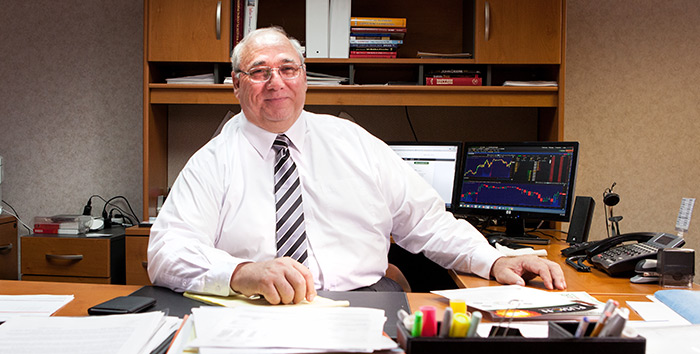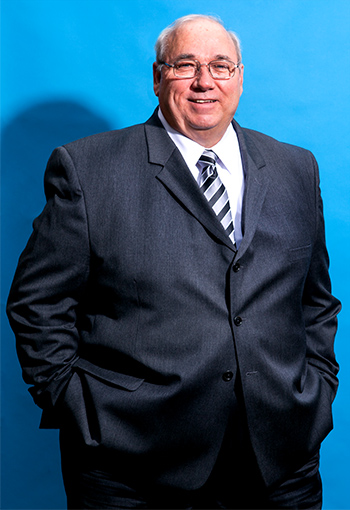Socratic approach
Socratic approach

John McGonagle CFP, CRPC • Northville, MI
Asset Architects LLC
Frank dialogue can create tension, but John McGonagle believes that it helps clients better recognize their needs.
Proactive Advisor Magazine: John, tell me a little about your background and why you became an advisor.
I came from a family of pretty modest means, which has been a driver for trying to achieve business success. I have always been interested in finance and business, owning my own retail business at age 21. Even when I was working 70-hour weeks in retail, I appreciated how important the financial side of the business was in terms of managing cash flow, inventory, capital financing, etc. I successfully cashed out of the retail business and began a career that encompassed many sides of the financial-services industry: insurance, banking, financial product sales management and marketing, commercial real estate, and business development. All of these experiences have proven invaluable in shaping my perspective as an advisor and RIA.

What were the commonalities of those experiences?
I think process and collaboration are critically important in any endeavor. Education is also a big part of selling oneself and one’s capabilities. It is much better to have the individual across the table come to their own conclusions based on the facts you have laid out, rather than trying to just sell a concept, strategy, or service in a heavy-handed way.
An early mentor introduced me to what I call the “five Ts”: time, temperament, technology, training, and trust. You basically need all of these to be successful in whatever you do—and if you need to grow or become more expert in one of these areas, find the best resource to help you meet that need. Falling under the heading of training, there might even be a sixth “T.” As I grow my business, it is apparent how important it is to be able to transfer knowledge to others in your organization, so they can implement a repeatable, successful process.
“If there is no tension in problem-recognition, there is usually no action. People make changes because there is a real, perceived need for changes.”
What is your focus with clients today?
We have several business entities under our overall structure, but my team’s primary focus is on retirement-income planning. I employ a very Socratic approach to the planning process, involving clients in understanding what they have been doing, where they need to go, and where the underlying shortfalls might exist. Only then can we come up with a plan where they will have buy-in and be involved in the solutions.
I like to study human behavior and how it pertains to personal finances. The types of questions you ask a client and the order they are asked becomes very important. The idea is not only to have a client see the issues for themselves but also for them to internalize the need for solutions. If there is no tension in problem-recognition, there is usually no real action. People will not make changes because they want to feel better about doing it; they will make changes because there is a real, perceived need for them. The good news is, ironically, in the long run they will feel much better for having done it.
The reality is that we are not only in the investment-services business, we are in the investment-services marketing business. There is the obvious importance of prospecting for new clients in terms of growing the practice. But there is also a strong marketing element to making sure clients are properly presented with the information they need for informed decision-making.
How does this apply to clients’ investments?
 Once we have thoroughly gone through the discovery process, I present solutions in increments, which I have found works best. Most of the people we work with facing retirement want some level of a guaranteed source of income, and the right annuity product may fit that need nicely. But people also need to grow their assets over time to provide for adequate distributions throughout their retirement. How can one take the assets gathered over a lifetime and turn them into a paycheck?
Once we have thoroughly gone through the discovery process, I present solutions in increments, which I have found works best. Most of the people we work with facing retirement want some level of a guaranteed source of income, and the right annuity product may fit that need nicely. But people also need to grow their assets over time to provide for adequate distributions throughout their retirement. How can one take the assets gathered over a lifetime and turn them into a paycheck?
This is where we will usually turn to active money management by third-party managers. I will ask a client, “What has to happen for you to make money in a traditional investment portfolio?” And they answer correctly, “The market has to go up.” I lay out a chart of the S&P 500, breaking it down from 1980-2000 and then 2000 through today. It becomes pretty obvious that the fundamental nature of the stock market has changed. It does not always go up—in fact, more recently, close to half of the time it does not go up. I ask then if a long-only investment strategy, staying fully invested at all times, makes a lot of sense. The answer is pretty universally “No.”
So we have to find a better way that goes beyond modern portfolio theory. That is active money management—it has the ability to go to cash when needed, rotate into different asset classes and sectors, or go inverse when there is a bear market. Active money management represents a strategy that is going to respond to the marketplace in a proactive fashion. It can help to preserve client capital through risk management in difficult markets, and perhaps even profit during bear markets. But in favorable markets, it can find a trend and take advantage of the bull market.
“Active management is a sophisticated approach to the volatility we have seen over the past 15 years.”
Great explanation, John. What are the benefits of active money management for your practice and your clients?
The first major benefit is the element of risk management. Active management is a sophisticated approach to the volatility we have seen over the past 15 years. By smoothing out volatility for client portfolios, active management helps me plan better for a range of high-probability return expectations over the long term.
Second, active management can help with the most troubling issues of investor behavior. While clients have been told for decades about buy-and-hold investing, when markets crash they naturally tend to panic. This can result in some very bad decision-making. Active management can circumvent that issue in the first place.
Third, my use of third-party managers allows me to take a very impartial view of strategies for my clients. I am not trying to advocate for or against a specific strategy or manager—my only goal is selecting the highest-quality managers who can perform against their stated objectives. It is also important to point out to clients that these are dedicated professionals who are employing the most sophisticated technical strategies and constantly evaluating market conditions—no advisor can do that as effectively on their own.
The bottom line is that active management has become a differentiator for my practice—offering my clients a solution they have likely not heard about before and one that can present a better answer for their investment needs.
Disclosure: Advisory services offered through EPI Advisors LLC, a MI registered investment advisor.
Photography by Tom McKenzie

